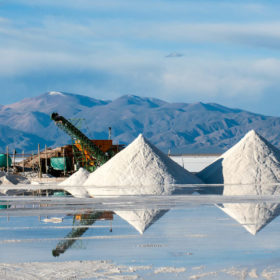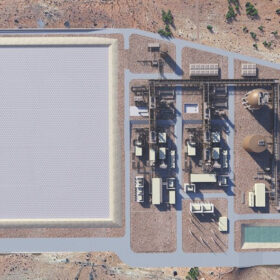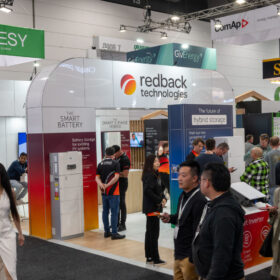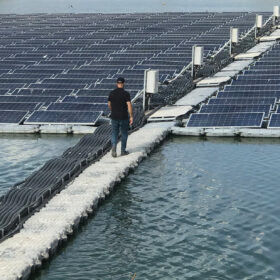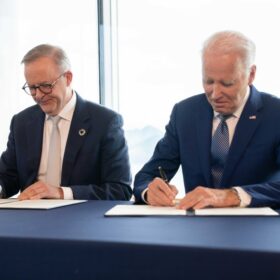Researchers in Australia and China develop technology to recover lithium from saltwater
Researchers from the Monash Suzhou Research Institute and the University of Queensland have developed a nanofiltration technology to extract lithium from low-grade saltwater brines with high magnesium content. The technology achieves 90% lithium recovery, nearly double the performance of traditional methods, while dramatically reducing extraction times.
Engie starts building 250 MW of solar in Australia
Engie has started construction on the 250 MW Goorambat East solar farm in Victoria, Australia. It is the state’s largest solar project under construction and is expected to be operational by 2027.
Australian communities push back against big renewables
As the Australian authorities launch rolling tenders for 32 GW of renewables and storage by 2030, it has become clear that some communities, including locals around pv magazine reporter Bella Peacock’s hometown, have not been brought onside. Heated debate on social media and a frenzy stoked by concerns about the impact on the natural environment are throwing up hurdles for renewables development.
Compressed air energy storage at a crossroads
Compressed air energy storage (CAES) is considered a mature form of deep storage due to its components being firmly “de-risked” but few projects are operating in the Western world. A project in the remote New South Wales town of Broken Hill promises to lead the way.
Redback Technologies goes into voluntary administration in Australia
Redback Technologies, an Australian inverter and battery company, is trying to secure new investment after entering voluntary administration this week.
Longi launches anti-dust solar module for C&I segment
Chinese solar manufacturer Longi has developed a new “anti-dust” module for the commercial and industrial (C&I) market in Australia. The frame sits flush against the glass on the short side, allowing water to wash off.
Australian firm secures PPA for 700 MW of floating PV plus battery in Sri Lanka
Australia’s United Solar Group has secured a power purchase agreement (PPA) for 700 MW of floating solar and a 1.5 GWh battery project in Kilinochchi, Sri Lanka.
Piling subcontractor fined after explosion on Australian solar farm
An Australian court has fined a subcontractor providing piling services at Columboola Solar Farm AUD40,000 ($26,300) for failing to comply with a health and safety standards after an aerosol can explosion caused a metal bar to strike a worker.
US draft rules may disqualify Australian critical minerals from IRA subsidies
A number of Australian critical mineral producers will likely be ineligible for US Inflation Reduction Act (IRA) subsidies, as the US government has published draft rules forbidding access to enterprises with stakes held by Chinese investors.
Clean Energy Council notes decline in Australian renewable energy investment
Investment in Australia’s renewable energy sector is more than 10 times lower than what it should be to reach 2030 targets, according to a new report by the Clean Energy Council.

